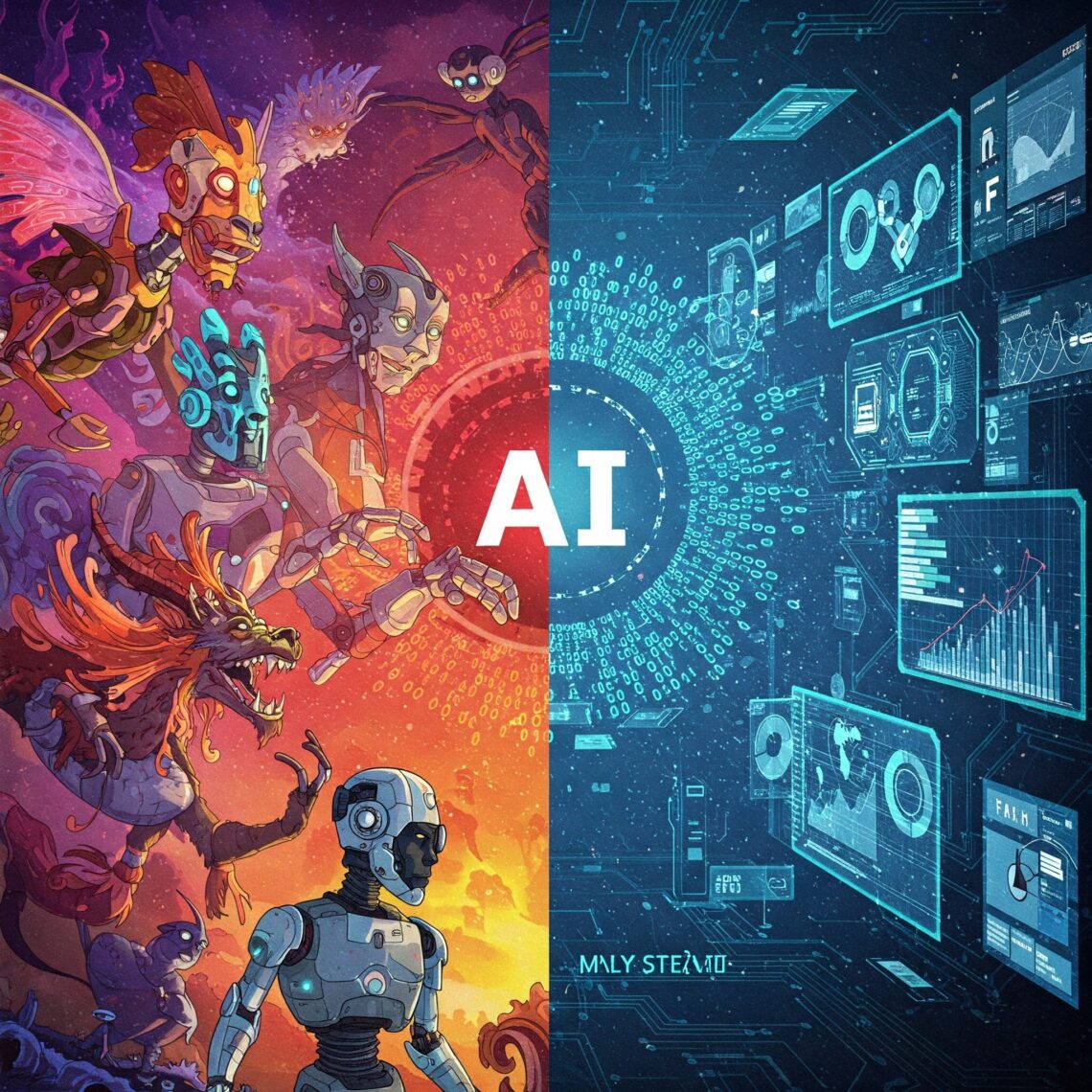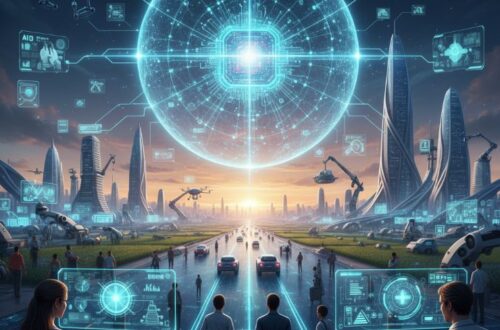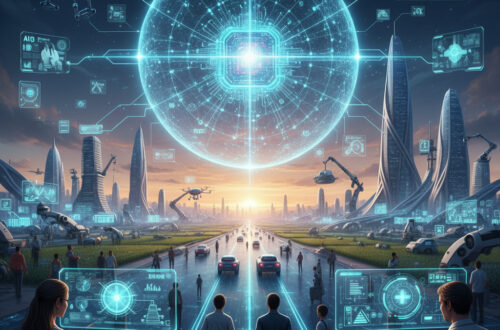Artificial Intelligence (AI) is arguably one of the most talked-about technologies of our time. However, its rapid evolution and portrayal in popular culture have led to widespread misconceptions. From sentient robots plotting world domination to flawless systems that never err, the reality of AI often gets lost in a sea of speculation. Separating science fiction from the factual capabilities and limitations of AI is crucial for everyone, whether you’re a tech enthusiast, a student, a professional, or simply someone curious about this transformative technology. Let’s debunk some of the most common myths and facts about Artificial Intelligence to gain a clearer understanding of how AI truly works today.
Introduction
The world of Artificial Intelligence is frequently shrouded in mystery and hyperbole, largely fueled by dramatic depictions in movies, television shows, and even some corners of the internet. This often paints a picture of AI that is far removed from its current state and near-term potential. Understanding the distinction between these sensationalized notions and the actual science behind AI is not just an academic exercise; it’s essential for navigating a future increasingly shaped by this technology. By separating facts from fiction, we can foster a more realistic understanding of AI’s capabilities, limitations, and its true impact on our lives.
Top 10 Myths and the Real Facts
Let’s delve into some of the most prevalent myths about AI and uncover the underlying facts:
Myth #1: AI Thinks Like a Human
Fact: While AI excels at tasks that mimic certain aspects of human cognition, such as recognizing patterns, learning from data, and solving specific problems, it fundamentally lacks consciousness, emotions, and genuine self-awareness. Current AI operates based on algorithms and vast amounts of data, enabling it to perform complex calculations and predictions. However, it doesn’t possess the subjective experiences, feelings, or understanding of the world that characterize human thought. It’s more accurate to say AI processes information in ways that resemble certain aspects of human thinking, but the underlying mechanisms are entirely different.
Myth #2: AI Will Take All Our Jobs
Fact: The narrative of widespread job displacement due to AI is a significant concern, but the reality is more nuanced. While AI-powered automation will undoubtedly transform the labor market by taking over repetitive and manual tasks, it is also creating new job categories that didn’t exist before. These include roles such as AI ethics experts, data scientists, AI trainers (data annotators), machine learning engineers, and AI maintenance technicians. Instead of a complete elimination of jobs, AI is more likely to lead to a shift in job roles, requiring humans to develop new skills and work collaboratively with AI systems.
Myth #3: AI Can Make Decisions on Its Own
Fact: Current AI systems, even sophisticated ones, operate based on the data and algorithms that humans provide. They learn patterns from this data and apply those patterns to new situations. AI lacks genuine autonomy in the sense of having its own intentions, goals, or the ability to make decisions entirely independently of its programming. While some narrow AI systems might exhibit a degree of decision-making within very specific parameters (like a self-driving car choosing a route based on traffic), this is still within the bounds of its pre-programmed instructions and the data it has been trained on.
Myth #4: All AI is Dangerous and Could Destroy Humanity
Fact: The idea of a superintelligent AI becoming a malevolent force and threatening humanity is a popular trope in science fiction. However, most current AI is “narrow AI” (also known as weak AI), designed to perform specific tasks like image recognition, language translation, or playing chess. The concept of a general-purpose AI with human-level intelligence (AGI) or superintelligence that surpasses human intellect remains largely theoretical and is not a current or immediate threat. While the long-term implications of advanced AI warrant careful consideration and ethical guidelines, fear-mongering about imminent AI apocalypse is largely unfounded based on the current state of the technology.
Myth #5: AI is 100% Objective and Unbiased
Fact: A common misconception is that AI, being based on code and data, is inherently objective and free from human biases. However, the reality is that AI systems can inherit and even amplify biases present in the data they are trained on. If the training data reflects societal prejudices related to race, gender, or other characteristics, the resulting AI model can exhibit biased outcomes in areas like facial recognition, loan applications, or even criminal justice. Actively mitigating bias in AI requires careful data curation, algorithm design, and ongoing monitoring.
Myth #6: You Need to Be a Genius to Understand or Use AI
Fact: While the underlying mathematics and engineering of AI can be complex, the increasing availability of user-friendly tools and platforms is making AI more accessible to non-experts. Everyday applications like chatbots, image generators, smart assistants, and recommendation systems are powered by AI and are used by millions without requiring deep technical knowledge. Furthermore, educational resources and intuitive interfaces are demystifying AI concepts for a broader audience.
Myth #7: AI Will Soon Have Emotions Like Humans
Fact: AI can be programmed to simulate emotional responses in interactions, such as a chatbot expressing empathy or frustration. However, this is a sophisticated form of pattern recognition and mimicry. AI does not “feel” emotions in the human sense because it lacks the biological and neurological structures that give rise to subjective experiences and consciousness. The current focus in AI research is on enhancing cognitive abilities, not on replicating human emotional complexity.
Myth #8: AI Works Perfectly and Never Makes Mistakes
Fact: AI models, despite their impressive capabilities, are prone to errors, especially when faced with data or situations outside their training or when trained with incomplete or poor-quality data. Even highly advanced language models like GPT can “hallucinate” or generate incorrect or nonsensical information. The accuracy and reliability of AI systems are constantly being improved, but they are not infallible and require ongoing testing, validation, and refinement.
Myth #9: AI and Robots Are the Same Thing
Fact: While the terms are often used interchangeably, AI is the “brain” or the intelligence, while robots are the “body” or the physical embodiment. Many robots utilize AI algorithms to perform tasks autonomously or semi-autonomously, but not all AI is used in robots. For example, AI powers virtual assistants on smartphones and recommendation engines on websites, which have no physical form.
10 Myth #10: AI Understands the World Like Humans Do
Fact: AI excels at identifying patterns and correlations in data, but it lacks the deep, contextual understanding of the world that humans possess. Humans draw upon a vast reservoir of common sense, cultural knowledge, and lived experiences to interpret information and make inferences. AI, in its current form, operates primarily on the statistical relationships within its training data and doesn’t possess this broader understanding or the ability to reason in the same way humans do.
Why These Myths Exist
The prevalence of these myths can be attributed to several factors:
- Media Influence and Science Fiction: Popular culture often portrays AI in exaggerated and sensationalized ways for dramatic effect, contributing to unrealistic expectations and fears.
- Lack of Accessible, Accurate AI Education: Many people lack access to clear and understandable information about the fundamental principles and current state of AI.
- Fear of the Unknown and Rapid Technological Change: The rapid advancements in AI can be unsettling, leading to anxieties about its potential impact and fueling speculative narratives.
How to Stay Informed About AI
To navigate the world of AI with a more informed perspective, consider the following:
- Follow Reputable AI Publications and Websites: Stay updated with news and research from trusted sources in the AI field.
- Learn Basic AI Concepts: Explore introductory resources from organizations like Google AI, OpenAI blog, and MIT Technology Review to gain a foundational understanding.
- Question Viral Claims and Double-Check Sources: Be critical of sensationalized or unverified information about AI circulating online.
Conclusion
Understanding the true capabilities and limitations of Artificial Intelligence is crucial in an increasingly AI-driven world. By separating the myths from the facts, we can move beyond sensationalized narratives and engage with AI in a more informed and responsible manner. Encouraging critical thinking and fostering a genuine curiosity about AI’s real-world applications and its inherent boundaries will empower us to harness its potential while mitigating its risks, paving the way for a future where AI serves humanity effectively and ethically.





